- Administrator
- Albums and Singles
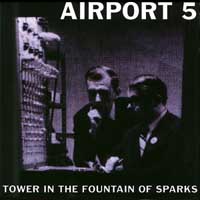 #15 in the Fading Captain Series, this release from Airport 5 is thefirst LP Rob Pollard has recorded with Tobin Sprout since the latterleft Guided By Voices to focus on his solo career. Given those keypieces of information, one could probably form a pretty solidpreconception about the sound of this record and what they might findwhen listening to it. Let's face it: Pollard is one of those artiststhat you either love or despise. So those who don't Like any ofPollard's music with Guided By Voices or the plethora of other bandshe's in, skip right over this review. The other camp will be happy toknow that these two artists still make magic together, and it's in rareform all over this release. From the first track, "Burns Carpenter, ManOf Science," you're drawn in to that weird land where anything ispossible, at least lyrically speaking. And it's an amazing thing,considering that the music and words were recorded separately (possiblyeven written separately). Sprout is an amazingly talented musician,capable of playing all the components that make up your average bandstructure, and writing melodies that hold great hooks and fantastictwists and variations. And Pollard is just plain weird. Any man whowrites songs about bright paper werewolves or scientists creatingliquid forms of love has some issues to resolve. But together it makesfor fascinating music, as it has in the past. I'm glad theses twomusicians are working together again, because these initial results areproof that thos combination still works. I hope to hear more fromAirport 5 soon.
#15 in the Fading Captain Series, this release from Airport 5 is thefirst LP Rob Pollard has recorded with Tobin Sprout since the latterleft Guided By Voices to focus on his solo career. Given those keypieces of information, one could probably form a pretty solidpreconception about the sound of this record and what they might findwhen listening to it. Let's face it: Pollard is one of those artiststhat you either love or despise. So those who don't Like any ofPollard's music with Guided By Voices or the plethora of other bandshe's in, skip right over this review. The other camp will be happy toknow that these two artists still make magic together, and it's in rareform all over this release. From the first track, "Burns Carpenter, ManOf Science," you're drawn in to that weird land where anything ispossible, at least lyrically speaking. And it's an amazing thing,considering that the music and words were recorded separately (possiblyeven written separately). Sprout is an amazingly talented musician,capable of playing all the components that make up your average bandstructure, and writing melodies that hold great hooks and fantastictwists and variations. And Pollard is just plain weird. Any man whowrites songs about bright paper werewolves or scientists creatingliquid forms of love has some issues to resolve. But together it makesfor fascinating music, as it has in the past. I'm glad theses twomusicians are working together again, because these initial results areproof that thos combination still works. I hope to hear more fromAirport 5 soon.
samples:
Read More
- Administrator
- Albums and Singles
 The fourth full-length studio album from this English quartet is boththeir most vocal and most structured release to date, focusing moresoon songcraft and development than ever before. Fear not, however, asthere's still a large amount of improvisational influences and playfulfuckery on nearly everything, including sounds of the bathtub, cellularphones, and kitchen utensils alongside the intentionally mis-playedstandard rock instruments, classical and jazz wind instruments,strings, accordion, and numerous percussion tools. If there's one thingsmoking pot teaches you, it's how to become a craftsman (how to makethe best bong out of a melon, etc,...) and I have always consideredVolcano the Bear to be a crafty group of lads. Over the few releasesthey've had, it's clearly visible how the lot is increasinglyharnessing that craftmanship into a more organized, bridled chaos. Onceagain, the group recorded with Kev Reverb — once described as "a tenfoot tall cowboy with sunglasses, dressed all in black and possessing avoice like The Voice Of DOOM" — who runs an appropriately named'Memphis studios' out of Leicester, UK. The album contains punchdrunksurrealistic singalongs like the opener, "Hairy Queen" and parts of"Seeker" as well as lengthy drawn-out mostly instrumentaleverything-and-the-kitchen-sink pieces like the title track, withsuggestive hints of traveling minstrals in the album's closer, "I amthe Mould". If I could recommend any album to aquire and memorize onlyto bring to your school's art class only to play and sing along withand confuse the fuck out of those "artistes," this would be it. 'FiveHundred Boy Piano' is their second release for Steven Stapleton'sUnited Dairies label, and features artwork from each of the members aswell as Stapleton, himself.
The fourth full-length studio album from this English quartet is boththeir most vocal and most structured release to date, focusing moresoon songcraft and development than ever before. Fear not, however, asthere's still a large amount of improvisational influences and playfulfuckery on nearly everything, including sounds of the bathtub, cellularphones, and kitchen utensils alongside the intentionally mis-playedstandard rock instruments, classical and jazz wind instruments,strings, accordion, and numerous percussion tools. If there's one thingsmoking pot teaches you, it's how to become a craftsman (how to makethe best bong out of a melon, etc,...) and I have always consideredVolcano the Bear to be a crafty group of lads. Over the few releasesthey've had, it's clearly visible how the lot is increasinglyharnessing that craftmanship into a more organized, bridled chaos. Onceagain, the group recorded with Kev Reverb — once described as "a tenfoot tall cowboy with sunglasses, dressed all in black and possessing avoice like The Voice Of DOOM" — who runs an appropriately named'Memphis studios' out of Leicester, UK. The album contains punchdrunksurrealistic singalongs like the opener, "Hairy Queen" and parts of"Seeker" as well as lengthy drawn-out mostly instrumentaleverything-and-the-kitchen-sink pieces like the title track, withsuggestive hints of traveling minstrals in the album's closer, "I amthe Mould". If I could recommend any album to aquire and memorize onlyto bring to your school's art class only to play and sing along withand confuse the fuck out of those "artistes," this would be it. 'FiveHundred Boy Piano' is their second release for Steven Stapleton'sUnited Dairies label, and features artwork from each of the members aswell as Stapleton, himself.
samples:
Read More
- Administrator
- Albums and Singles
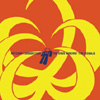 For their Warp Records debut, Antipop present a 7 track EP that's donespinning in less than 17 minutes. Warp may seem like a strange placefor an MC trio to be, but APC's hip hop is as electronic and forwardthinking as anything else on the label. NYC's Beans, Priest and Sayidfastidiously flow mile a minute rhymes, as always, and are as involvedin the sparse yet phat production as producer/engineer/arranger/mixerEarl Blaize. "Tuff Gong" gets right up in your face quick, Sayidletting you know within the minute that he "have the need to tell whatI see". "Splinter" is as close as you'll get to verse chorus verse butlike "Vector", it's a bit too laden with annoying synth notes. Moog andsynth lines help propel the instrumental future funk groove of"Dystopian Disco Force". In "39303," Priest testifies, "I write like aman who can't read / feelin' the need / to seize his mind of reason / Ispit treason / MCs in season / vets freezin' / I rap like there'snothin' left to believe in / clumsily uneven," seconds before his voiceis panned to one channel and digital gurgles fill the opposite one.Next, "Pit," disorients with 2 minutes worth of veering tones, off/onbeeps and ping pong ball percussion, then "Perpendicular" adds another2 minutes of tasty piano and atmosphere enhanced hip hop beats. Thisdisc is all over the place, much like an APC album, but it's all themore obvious in such a short time span. And unfortunately, I'd say only4 tracks are really necessary (but hey, it's only ~$7) so here'slooking forward to the debut album for Warp set to drop early nextyear. In the meantime, get "Tragic Epilogue" and "Shopping CartsCrashing" if'n you don't already have 'em.
For their Warp Records debut, Antipop present a 7 track EP that's donespinning in less than 17 minutes. Warp may seem like a strange placefor an MC trio to be, but APC's hip hop is as electronic and forwardthinking as anything else on the label. NYC's Beans, Priest and Sayidfastidiously flow mile a minute rhymes, as always, and are as involvedin the sparse yet phat production as producer/engineer/arranger/mixerEarl Blaize. "Tuff Gong" gets right up in your face quick, Sayidletting you know within the minute that he "have the need to tell whatI see". "Splinter" is as close as you'll get to verse chorus verse butlike "Vector", it's a bit too laden with annoying synth notes. Moog andsynth lines help propel the instrumental future funk groove of"Dystopian Disco Force". In "39303," Priest testifies, "I write like aman who can't read / feelin' the need / to seize his mind of reason / Ispit treason / MCs in season / vets freezin' / I rap like there'snothin' left to believe in / clumsily uneven," seconds before his voiceis panned to one channel and digital gurgles fill the opposite one.Next, "Pit," disorients with 2 minutes worth of veering tones, off/onbeeps and ping pong ball percussion, then "Perpendicular" adds another2 minutes of tasty piano and atmosphere enhanced hip hop beats. Thisdisc is all over the place, much like an APC album, but it's all themore obvious in such a short time span. And unfortunately, I'd say only4 tracks are really necessary (but hey, it's only ~$7) so here'slooking forward to the debut album for Warp set to drop early nextyear. In the meantime, get "Tragic Epilogue" and "Shopping CartsCrashing" if'n you don't already have 'em.
samples:
Read More
- Administrator
- Albums and Singles
 Two years in the making, Michael Gira (SWANS, The Angels of Light) andDan Matz (Windsor for the Derby, The Birdwatcher) casually created andrecorded a dozen songs together in the relaxed setting of Matz's homes.Both men are simply credited with various instruments and vocals (plusengineering by Matz) and generally alternate lead vocals track to tracksave for a lone instrumental. The instrumentation is actually quiteextensive, approaching the ornate fleshing out of an Angels album:acoustic and electric guitars, bass guitar, organ, piano, synth,drums/percussion, drum machine, harmonica, banjo, a few samples andsome guitar by James Plotkin and background vocals by Anna Neighbor. Ifyou're coming to this disc via Gira and/or Matz's other endeavors, youwon't be surprised but will probably be as pleased with the results asI am. These are 'simple', spontaneous 'pop' songs as affected byAmericana as they are the avant-garde. And the pair's voices, poetryand basic song writing skills and styles complement one another well.The sound and feel is mostly slow and subdued, the mood in varyingdegrees of what I like to call 'uplifting melancholy'. Brief commentson a handful of tracks: "Pacing the Locks" beautifully mourns thepassing of time, "Is/Was" becomes soaked in shimmering synth bath andbell tones, "Lines" is pretty pop steeped in blue grass roots, "BrownEyes" and "Waiting Beside Viragio" are sparse, seemingly solo lovesongs, "Forcing Mary" will nod your head with driving guitar stabs and"Sunflower" is the peculiar instrumental, a droning hum with sprinklesof piano, guitar and whistling. Though I'm not (yet) as taken with"What We Did" start to finish as I am The Angels of Light's "NewMother" and "How I Loved You", I'm still more than happy with what theydid. Gira is currently on tour with The Angels of Light in NorthAmerica through mid December.
Two years in the making, Michael Gira (SWANS, The Angels of Light) andDan Matz (Windsor for the Derby, The Birdwatcher) casually created andrecorded a dozen songs together in the relaxed setting of Matz's homes.Both men are simply credited with various instruments and vocals (plusengineering by Matz) and generally alternate lead vocals track to tracksave for a lone instrumental. The instrumentation is actually quiteextensive, approaching the ornate fleshing out of an Angels album:acoustic and electric guitars, bass guitar, organ, piano, synth,drums/percussion, drum machine, harmonica, banjo, a few samples andsome guitar by James Plotkin and background vocals by Anna Neighbor. Ifyou're coming to this disc via Gira and/or Matz's other endeavors, youwon't be surprised but will probably be as pleased with the results asI am. These are 'simple', spontaneous 'pop' songs as affected byAmericana as they are the avant-garde. And the pair's voices, poetryand basic song writing skills and styles complement one another well.The sound and feel is mostly slow and subdued, the mood in varyingdegrees of what I like to call 'uplifting melancholy'. Brief commentson a handful of tracks: "Pacing the Locks" beautifully mourns thepassing of time, "Is/Was" becomes soaked in shimmering synth bath andbell tones, "Lines" is pretty pop steeped in blue grass roots, "BrownEyes" and "Waiting Beside Viragio" are sparse, seemingly solo lovesongs, "Forcing Mary" will nod your head with driving guitar stabs and"Sunflower" is the peculiar instrumental, a droning hum with sprinklesof piano, guitar and whistling. Though I'm not (yet) as taken with"What We Did" start to finish as I am The Angels of Light's "NewMother" and "How I Loved You", I'm still more than happy with what theydid. Gira is currently on tour with The Angels of Light in NorthAmerica through mid December.
samples:
Read More
- Administrator
- Albums and Singles
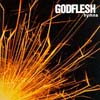 A few months after Earache released a 2-disc retrospective ("In AllLanguages"), Godflesh is back on a new label (Music For Nations/KochRecords) with a record of all-new material, a new band member(ex-Swans, ex-Prong Ted Parsons, who did live drums on the "Songs ofLove and Hate" tour is now a full time 'member') and anotherprogression in sound. While in 1999 Broadrick and co. moved to a more'electronic' dub-ish sound, with heavy use of drum machines and somesynth-work on their album "Us & Them", this new record sees themgoing back to the mostly guitar-based work they did early in theircareer. I don't know how hard it was to make this record for the band,but it is worth mentioning that bassist G.C. Green left Godflesh soonafter the release of this record. The main difference between thisrecord and the early stuff is Parsons' drumming, which gives "Hymns" amore open, spacious feel than say, the claustrophobic "Streetcleaner".Which is not to say that this is light record in any way -- if that'syour worry, don't sweat it, when the Black Sabbath-like "Voidhead" andit's outro/bridge of "why am I such a void?" or the absolutely crushing"Antihuman" crawls out of your speakers, there can be no doubt thatthis album is still heavier than almost anything else you heard thisyear. Broadrick has really made good progress vocally, and variety inhis vocals is a high point of this disc; many of the tracks have clean(but unintelligible) vocals. While guitar pyrotechnics was never whatGodflesh was primarily about, if you're a fan of heavy guitar, you'llget your money's worth on this disc.
A few months after Earache released a 2-disc retrospective ("In AllLanguages"), Godflesh is back on a new label (Music For Nations/KochRecords) with a record of all-new material, a new band member(ex-Swans, ex-Prong Ted Parsons, who did live drums on the "Songs ofLove and Hate" tour is now a full time 'member') and anotherprogression in sound. While in 1999 Broadrick and co. moved to a more'electronic' dub-ish sound, with heavy use of drum machines and somesynth-work on their album "Us & Them", this new record sees themgoing back to the mostly guitar-based work they did early in theircareer. I don't know how hard it was to make this record for the band,but it is worth mentioning that bassist G.C. Green left Godflesh soonafter the release of this record. The main difference between thisrecord and the early stuff is Parsons' drumming, which gives "Hymns" amore open, spacious feel than say, the claustrophobic "Streetcleaner".Which is not to say that this is light record in any way -- if that'syour worry, don't sweat it, when the Black Sabbath-like "Voidhead" andit's outro/bridge of "why am I such a void?" or the absolutely crushing"Antihuman" crawls out of your speakers, there can be no doubt thatthis album is still heavier than almost anything else you heard thisyear. Broadrick has really made good progress vocally, and variety inhis vocals is a high point of this disc; many of the tracks have clean(but unintelligible) vocals. While guitar pyrotechnics was never whatGodflesh was primarily about, if you're a fan of heavy guitar, you'llget your money's worth on this disc.
Read More
- Administrator
- Albums and Singles
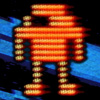 The use of 8 bit chiptune sounds has been extending beyond the insular video game world and into other genres.  Dusty old Nintendo consoles and Commodore 64 computers have been reprogrammed into musical instruments for years now, and there is an entire compilation album of artists using only the Game Boy based Nanoloop software.  Return of the Bloop Beep Buzz pushes this concept even further, using the even more primitive Atari 2600 as its primary source, resulting in a limited, but still unique sonic palette.
The use of 8 bit chiptune sounds has been extending beyond the insular video game world and into other genres.  Dusty old Nintendo consoles and Commodore 64 computers have been reprogrammed into musical instruments for years now, and there is an entire compilation album of artists using only the Game Boy based Nanoloop software.  Return of the Bloop Beep Buzz pushes this concept even further, using the even more primitive Atari 2600 as its primary source, resulting in a limited, but still unique sonic palette.
While the venerable 2600 isn't the most primitive of video game technology, it certainly is close, producing limited graphics and even more limited sounds.Mike Bourque sticks mostly to just the stock system, throwing in processing via the occasional guitar pedal, but never enough to obscure the underlying sounds.
Tracks like "Xenotropolis" and "Red Dragon vs. Square Dude" shape the white noise blasts into a rudimentary drum machine, pushing out a gabber-type throb over bassy abstract loops and Pac-Man like melodic outbursts.Hints of some of the earliest Digital Hardcore releases pop up, but the sound is completely unique.
"Interlocking Secrets" and "Full Attack Mode" also keep a rhythmic structure to them, but it's less of a focus, and more about obtuse loops and dissonant electronics."Wave 44" also is as conceptual as it is rhythmic, building from a dramatically thin, brittle rhythm in to a slightly thicker, but still heavily filtered ending.
The early-Autechre like glitchy crunch of "Dr. Mindbender in the Lab" and technoid thump of "Jammas on the Amazon" round out the multifaceted beat-centric tracks, but there’s also a few abstract, ambient-heavy moments scattered throughout.The textural, amorphous "Xenotropolis" leans into ambient techno realms, but in anything but the conventional sense.
"The Zaxxonian Theory" also is arrhythmic, with outstretched passages of sound and less of a perceptible formal structure, similar to the closer "Into the Darkness we Goeth".This track lets in a bit of industrial rhythmic thump, but ends in an over-driven, noise laden blast, perhaps taking the sound the furthest from its simplistic roots but never fully hiding where it came from.
I've always considered the "chiptune" scene more of a novelty than any meaningful music genre, and I’m probably the biggest video game fan on staff here at Brainwashed.However, this album goes beyond just novelty and is more of a study of limited instrumentation, reshaping the familiar lo-fi sounds into both beats and ambience.While the reliance on a singular source cuts the track-to-track diversity down a bit, the variation in structures covers for it nicely.Surely gamers will get more out of the disc than others, but its appeal wouldn't be limited to just that group.
samples:
 
Read More
- Administrator
- Albums and Singles
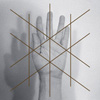 This album actually came as quite a surprise as soon as I started spinning it. I've always associated Wiese with hyper-kinetic, harsh laptop-sourced noise above all, and the seven tracks on this compilation instead show a tamer, more droning electronic sound, with the occasional bit of abstract electro-acoustic collage.
This album actually came as quite a surprise as soon as I started spinning it. I've always associated Wiese with hyper-kinetic, harsh laptop-sourced noise above all, and the seven tracks on this compilation instead show a tamer, more droning electronic sound, with the occasional bit of abstract electro-acoustic collage.
The pieces were created between 2004 and 2010, with some being sample-focused studio recordings, and others straight up live performances.What links them together is a focus less on raw dissonance, and more on sparse textures or droning electronics.
Opener "The New Dark Ages" heralds this immediately.The deep bassy rumble and tiny bits of static seem like they could open into full bore noise at any time, but instead they move at the speed of tectonic plates, blending in droning tones that never become too dominant."Burn Out," recorded live at No Fun Fest in 2006 is a similarly restrained work, slowly introducing deep, rattling tones and subtle noise.While the sound gets a bit raw later in the piece, things never get out of hand.
"Corpse Solo" and "Don't Move Your Finger" are less about the droning and more found sound/electro-acoustic improvisations.Taut, chaotic outbursts surge through both tracks, with the former drifting into slightly harsher territories, reminiscent of the Dadaist cutups of Runzelstirn & Gurgelstock.
The two long pieces that were recorded in 2010 are the culmination of the other tracks, encapsulating both jarring outbursts and tonal resonations."Scorpion Immobilization Sleeve" sounds like its built on a foundation of captured guitar feedback and erratic percussive thuds.It constantly changes forms as it goes on, picking up some of the collage-y elements and even a bit of harshness, but never going too far.
"Don't Stop Now, You're Killing Me" brings in some identifiable sounds, namely human voice and cymbal rattles, with neither used in a conventional manner.The voice (from Angus Andrew) is instead a guttural, pained death rattle that barely sounds human.While some of the other tracks have an inviting, almost mellow sound about them, here it’s purely sinister.
While I knew Wiese had expanded beyond just harsh noise, I didn't know his repertoire had become this diverse.Owing as much to the modern drone/doom world as the old school of experimental electronics, it’s a compilation that feels like a well planned, diverse album, which is no easy feat.Even people without a Merzbow record in their collection (if such people exist) can appreciate this one.
samples:
 
Read More
- Administrator
- Albums and Singles
 This "musical illustration" of the events occurring in the brain following a lethal stroke is a dramatic, chilling and emotional portrait. Musically, it is removed from anything else Nurse With Wound have done (even if it does touch on similar influences as the rest of Steve Stapleton’s body of work) as Bowers adds a more composerly hand to Stapleton’s surrealist drift. Bowers and Stapleton have crafted something unique that does not fit neatly into any categories, even amongst Nurse With Wound’s expanded horizons. This is draining, devastating and utterly compelling.
This "musical illustration" of the events occurring in the brain following a lethal stroke is a dramatic, chilling and emotional portrait. Musically, it is removed from anything else Nurse With Wound have done (even if it does touch on similar influences as the rest of Steve Stapleton’s body of work) as Bowers adds a more composerly hand to Stapleton’s surrealist drift. Bowers and Stapleton have crafted something unique that does not fit neatly into any categories, even amongst Nurse With Wound’s expanded horizons. This is draining, devastating and utterly compelling.
Bowers’ work in the medical field designing environmentally controlled rooms for operating theatres and medical imaging suites has added tremendously to the power of the piece. Listening to this from two different perspectives, firstly from that of an enthusiastic experimental music listener and secondly from my professional perspective as a neuroscientist reveals an impressive and moving synthesis of art, science and pathos. Concepts such as memory and disinhibition of neural networks are played out in the music; a warped sample of Mendelssohn’s "Wedding March" from A Midsummer Night’s Dream and the sound of children’s voices appear to represent the resurgence of memories in the minutes before death (possibly due to metabolic disturbances within the temporal lobes of the brain). The disrupted electrophysiological rhythms of the brain are represented in the discordant and tumultuous rhythms of Bowers’ playing.
Towards the end of the album, various permutations of "My Blue Heaven" are played, gasped and hinted at. The protagonist/patient/spirit promises to see loved ones (whether living or dead, we are unsure) in their blue heaven. The effect is moving and unsettling, my own memories at the loss of loved ones (albeit not from a stroke) emerging in the fabric of the music. While I have always found Nurse With Wound’s music to be enthralling on a number of levels, this is the first time I have ever felt Stapleton’s music to connect in such a powerfully emotional way. I have been frightened, entertained, humoured and provoked but never have I felt grief.
The weight of Rupture is crushing; this is not music to turn on, sit back and relax to. It is intrusive, captivating and mentally exhausting. Each time I listen to the album, I feel like another little part of me has changed. Aptly, the titles of the segments sum up not only the medical and physiological implications of a stroke but my feelings as a listener following this work: "A life as it now is, is not what it was, and will never be again."
samples:
 
Read More
- Administrator
- Albums and Singles
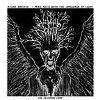 Two sides of a paranormal equation are presented in this cluster of songs. Decorated with primitive drums, avant drones, eclectic voices, and an array of stringed splendor, the two groups arrive at a meeting ground in the crossroads, with the arcane formulas of folk magic flowing down one street, and the poetic musings of a post-modern bard immersed in his lyrical wonderland on the other. Where one is ecstatic in the throes of Dionysian abandon, the other zones out into a haunted, rarefied Aethyr.
Two sides of a paranormal equation are presented in this cluster of songs. Decorated with primitive drums, avant drones, eclectic voices, and an array of stringed splendor, the two groups arrive at a meeting ground in the crossroads, with the arcane formulas of folk magic flowing down one street, and the poetic musings of a post-modern bard immersed in his lyrical wonderland on the other. Where one is ecstatic in the throes of Dionysian abandon, the other zones out into a haunted, rarefied Aethyr.
On the first side of this split 12" the group Stone Breath cauterized my wounded soul with the mythic sounds of their merrymaking. Playful and serious, reminiscent of wood elves and fey kicking around on some hand drums, banjos and dulcimer at a moonlit barn dance; the freshly painted hex sign above the wide double doors is charged by their sonorous vibrations, and the lunar light.
Of the three tracks the first is a slivered fraction of the two longer players. A brief line in a stanza, the lyrics are punctuated by deft finger picking. Resonant silver strings explode in a quick pattern that vanishes before its structure can be discerned, an experience both beautiful and terrible. "Scorpion Tears" shows off the highly focused ritual vocals which swerve back and forth from male to female, in a fiery dance. The deep male vocals are noble and assured and like a pink beam aimed at the third eye the words contain revelations. Where the second song is woody and deep, the third releases bright ripe notes. It feels racy and full bodied. "The Sky's Red Tongue" contains the same fast fingerpicking, but here the various guitars are dominant, whereas before the banjo was sustained in the foreground. Low whistles and flutes drone along, not quite trilling, a subtle bed the rest of the sounds swirl over. Until such a time as enough pressure is built up and the waters of the song poor over the spillway. Stone Breath manage to create songs that feel both decorous and informal. Good thing they have released a full length album, also titled The Aetheric Lamp and also out on Anti-Clock.
Stone Breath has a definite pagan quality, while Mike seed in contrast, is a touch more biblical, if not apocryphal. The second side, while being roughly around the same length of the first, feels a tad more substantial in that there are five songs, each of a medium length. Within them Mike Seed shows what he is capable of when he joins forces with the Language of Light. This guy has a seriously eerie voice and delivery style, but hey, I like eerie. As the first song, "Commit to Water," begins I hear the slosh and the slush of the stuff. An enervating, sourced-from-who-knows-what sound then appears, like a piece of driftwood to latch onto for survival, as Mike starts to extemporize on angels, Satan, and the soul.
"Rough Old Night" is my favorite song here, smack dab in the middle. The wormwood star makes an appearance in the lyrics for this one, as the narrator of the song rambles down to a desolate beach contemplating judgment day. The electronics lend it a favorable charm, dizzy oscillations power-surging at the right moments to embellish, with a moody punch, the darkness of the words. "Abraham's Guest" veers into bluesy terrain, with slurring slide guitar. Mike Seed sounds raspy and desperate, but resigned to his fate, which he finds in a deranged sputter of firework effects and the ominous beat of a dream. This fades seamlessly into the last number, an instrumental which offers reprieve, like a good friend giving shelter when it is most needed, protecting me from invisible forces who may not have my best interests in mind, sitting up with me until dawn when the madness goes away. A simple and elegant melody, on autoharp, dulicmer, or guitar. Does it really matter? It sounds wonderful and makes for a smooth finish.
Sorry, no audio samples. I don't have an easy way to transfer vinyl to digital.
Read More
- Administrator
- Albums and Singles
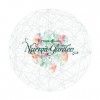 The year's first contender for top honors comes from violinist and composer Eyvind Kang. This new full-length on Ipecac sits among his major works, displaying a rare breadth of compositional talent, spectacular playing, and raw emotion.
The year's first contender for top honors comes from violinist and composer Eyvind Kang. This new full-length on Ipecac sits among his major works, displaying a rare breadth of compositional talent, spectacular playing, and raw emotion.
Eyvind Kang is a modern compositional giant who should require no introduction to the Brainwashed community. Kang has collaborated with avant-garde musicians ranging from Sunn O))) to Sun City Girls, and has contributed string arrangements to records by John Zorn, Mike Patton, Animal Collective, Bill Frisell, Laurie Anderson and Lou Reed (pre-Lulu). Most recently, his appearance on last year's Baroque Primitiva, by Alan "Alvarius B" Bishop, elevated that album from "very nice" to "essential." His solo recordings span well over a dozen full-lengths in 15 years, with highlights including Athlantis, The Yelm Sessions, and an Ipecac album smeared by (surprise!) Patton's divisive croon: Virginal Co Ordinates, which I very strongly feel is Kang's best album. Until now, that is.
Kang is at the very top of his game on The Narrow Garden, at a lean seven tracks and 37 minutes with no filler. Opener "Forest Sama'i" functions as a grand prelude, launching the album on a melodic, playful note. Kang recorded The Narrow Garden in Barcelona with an ensemble cast of 30 musicians, and on pieces like "Forest Sama'i," the group effort shines. Grounded by a Middle Eastern-derived melody, accented by meticulous woodwinds and strings (including Kang's violin), the song speeds its tempo near the end to stirring effect. "Pure Nothing" recalls Kang's collaborative LP with Jessica Kenney, Aestuarium, reissued last year on Ideologic Organ. Here, Kenney sings as if from a church hymnal, her angelic vocals floating across a classical soundscape, rich with quivering strings, as she cries out with pseudo-naïveté: "I cannot say whether I am asleep or awake / somebody tell me."
Led by the cries of seagulls at the start of "Usnea," a stormcloud of eerie atmosphere hovers onto the scene. The mood shift from "Pure Nothing" to "Usnea"—from Kenney's cloudbusting vocals into queasy dread—is perfect in its execution. The wall of Dolby THX-worthy, droning maelstrom eventually cedes to a couple of lingering woodwinds, dancing in the aftermath of the storm, transitioning into "Mineralia" at the album's midpoint. Kenney returns for a few operatic lines in what sounds like Latin, her singing this time hushed, drawn inward; she is overtaken by lush melodies that recall those of "Forest Sama'i" as the piece evolves. The spacious, relaxed tone foreshadows the title track, which is far more harsh and claustrophobic.
"The Narrow Garden" echoes the slow-building unease of "Usnea," with its chorus of stringed instruments lingering just long enough on individual, discordant clusters of notes to keep one's breath held tightly. "Nobis Natalis" clears the air to nice effect, spotlighting Kenney's vocals for a minute-long encore performance—and providing a palate cleanser before the album's strongest (and closing) statement, "Invisus Natalis." Cinematically evoking an array of natural imagery—birds, plants, flowers, water and so forth—Kang's melodies dance and twist about with ease. Over time, the song builds to a climax; violence is imminent, implied by the awesomely tense arrangement that steamrolls into film score-worthy drama, then unexpectedly drops out in a flicker of static.
Engaging from start to finish, The Narrow Garden is a strong contender for Eyvind Kang's best, and undoubtedly ranks among his high water marks as a recording artist. Its songs take real risks, skipping from Arabian and Middle Eastern melodies, to traditional Asian folk music, to Baroque and European classical composition. Envisioned and set into motion by one of today's sharpest composers, impeccably arranged, flawlessly played, beautifully produced: I cannot conceive of any way to improve upon Kang's stunning achievement on The Narrow Garden.
Samples:
Read More
- Administrator
- Albums and Singles
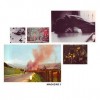 Loops of Your Heart is Axel Willner, better known as The Field for his three albums to date on Kompakt. His debut full-length under this new moniker sets aside the minimal techno formulae of his primary guise for a far more ambient experience. Unfortunately, he discards many of the distinct characteristics of The Field in the process, downplaying his established strengths.
Loops of Your Heart is Axel Willner, better known as The Field for his three albums to date on Kompakt. His debut full-length under this new moniker sets aside the minimal techno formulae of his primary guise for a far more ambient experience. Unfortunately, he discards many of the distinct characteristics of The Field in the process, downplaying his established strengths.
Like many side projects and alter egos before him, Loops of Your Heart sounds like a venture for Willner to explore ideas that he deems a bit too left-field for The Field's albums. His debut song released under this name was "Riding the Bikes," available for mass consumption on Kompakt's Pop Ambient 2012 compilation (also out this week). That track's echoing, looped guitar sounded not unlike a lost Vini Reilly piece; with no beats to speak of, it was a far cry from Willner's work as The Field. "Riding the Bikes" provided a glimpse of where Willner has now moved on his full-length as Loops of Your Heart, And Never Ending Nights. It's certainly not all Durutti Column-esque guitar (in fact, there's hardly any guitar on the album), but there are several hard experiments throughout. Nearly the entire album is looped ambience, occasionally backed by throbbing synth lines better described as "pulses" than "beats."
The opening "Little You, You Should Develop," with its gritty, two-note bass line hinting at an underlying rhythm, would not have sounded out of place on The Field's latest album, Looping State of Mind. However, the track's title is a glimpse into Willner's state of mind—a plea to his own muse, perhaps, to push forward into more experimental territory. And push forward he does: "Broken Bow" decries any hint of a minimal techno beat for its initial five minutes, abstract synth tones stabbing through a barren wasteland of drone, before a pitter-pattering pulse sneaks into the mix about halfway through. "Neukölln" is all spaced-out, sweeping strokes, with just a hint of melody and no beat in sight—not a far cry from Daniel Lopatin's early records as Oneohtrix Point Never. The wide-ranging samples scattered throughout The Field's albums are mostly absent; the sounds on this album, even when looped back onto themselves ("Cries"), sound organic, and are not recognizable from popular sources.
There are hints of Willner's day job scattered throughout, like the fluttering tones of "End," but the prevailing mood is less oriented toward the dancefloor, and more toward late-night reflection. Still, it is difficult to shake the feeling that And Never Ending Nights often sounds like a vehicle for Willner to sift through new ideas before his next major statement. I can picture a Field track like "Then It's White," the most outlying experiment on Looping State of Mind, coming from the same recording sessions as this album. At the end of the day, The Field's work is far more distinct, given that Willner has perfected his formulae three albums in, and is essentially making careful refinements at this point. And Never Ending Nights is pretty and occasionally memorable—like the heartstring-tugging coda to "Cries," the album's peak—but doesn't match the high quality and originality of Willner's albums as The Field.
Samples:
Read More


